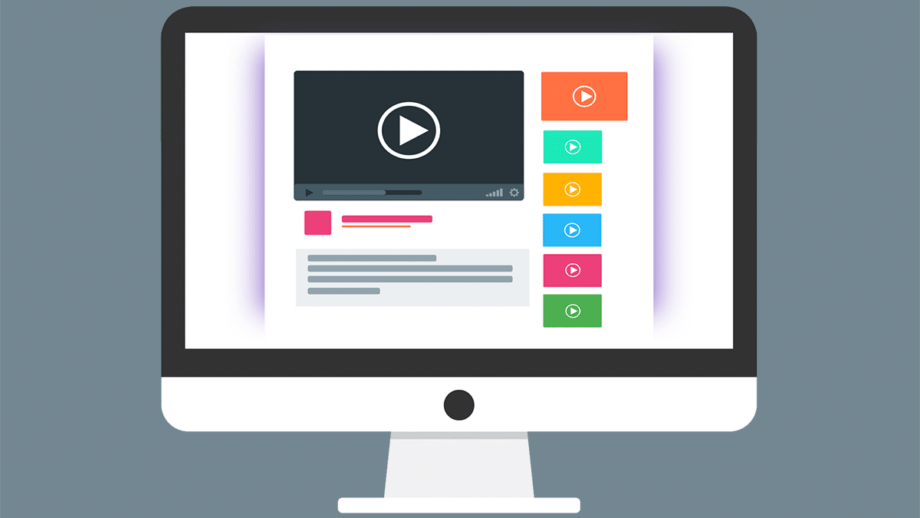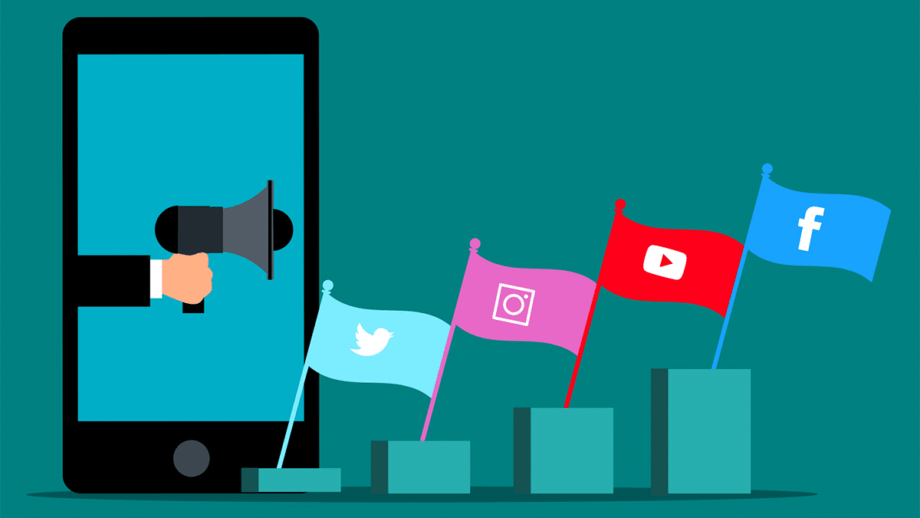In our digital age, getting your brand to shine online can feel like steering through a crowded market. You aim for visibility but often find yourself lost among countless competitors.
This struggle is common, and finding the right path in internet marketing may seem complex. But don’t worry – online marketing holds powerful keys to unlocking your brand’s potential by reaching out to the vast world wide web audience efficiently.
Our article cuts through the noise, offering you an easy-to-grasp guide on some pivotal online marketing techniques – from understanding your target audience with email lists and exploring the depth of search engine optimization (SEO) and pay-per-click advertising to harnessing the power of social media platforms like Instagram for engagement and sales boosts.
With each method explained simply, accompanied by strategic pointers and tool suggestions, we lay down a roadmap toward mastering internet promotion without feeling overwhelmed. Get ready for success!
Why Online Marketing is Crucial for Success?

Online marketing is key to success today. More people look online to find and buy things. This makes being visible online very important for businesses. With good e-marketing, companies can reach their audience where they spend a lot of time.
It’s not just about selling things on the web. It also helps businesses become well-known and keeps customers coming back.
Success in digital marketing means being ready to change quickly. The internet changes fast, so strategies need to keep up to attract more customers. Using different web-based tools helps understand what works best in attracting people to your site or social media page.
My own experience has shown that understanding your customers through data can skyrocket your brand’s presence online. This approach boosts visibility and draws more people to your business, helping it grow.
How to Understand Your Target Audience?

To understand your target audience, start with market research. This process involves gathering data about the people you want to reach. Use surveys, social media, and online forums to learn what they like and don’t like.
Look at what your competitors are doing too. This helps you see trends and what works in your industry. Market research is key to knowing your audience well.
Next, create customer personas. These are detailed descriptions of your ideal customers. Think about their age, job, hobbies, and challenges they face. Also, consider their role in buying things online or offline.
Creating these personas makes it easier for you to tailor content marketing and email campaigns that speak directly to them.
Lastly, analyze how your customers behave online – what they click on, how long they stay on a page, and what prompts them to buy something or sign up for a mailing list.
Understanding this behavior is crucial for fine-tuning your marketing methods.
1. Search Engine Optimization (SEO)

SEO makes your website show up higher on Google when people look for things you talk about. It’s like a secret code that helps more people visit your site. Even though SEO is part of Search Engine Marketing, we talk about it separately because it’s super important.
If you want folks to find you online, mastering SEO is a must! Ready to get more visits? Keep reading to learn how SEO can help.
Key SEO Strategies You Should Know
- On-Page SEO Techniques: This is about making each page on your site an entry point for visitors. Include keywords in titles, headers, and throughout your content, but keep it natural. Make sure images have alt tags that describe them using relevant keywords.
- Off-Page SEO Efforts: Work on getting other reputable websites to link back to yours (link building). Social media shares, guest blogging, and being listed in directories help improve your site’s credibility and ranking.
- Technical SEO Updates: Ensure your website’s backend is optimized as well. This includes improving page load speed with tools like Google PageSpeed Insights and ensuring mobile-friendliness with responsive web design.
- Local SEO Practices: For businesses with physical locations or serving specific areas, local SEO is crucial. Optimize your Google My Business profile, ensure consistent NAP details across the internet, and gather positive reviews from local customers.
Helpful Tools for SEO
- Google Search Console: This free tool from Google helps you understand how Google views your site. It shows what keywords bring people to your site, how each page performs, and what technical issues you need to fix.
- Bing Webmaster Tools: Similar to Google’s offering, this provides insights for sites on Bing. It helps in spotting issues and understanding your website’s performance on Bing search results.
- SEMrush: It’s an all-in-one marketing toolkit that includes features for improving online visibility and discovering marketing insights. SEMrush is great for keyword research, competitor analysis, and SEO audits.
- Yoast SEO: This WordPress plugin simplifies the management of key on-page SEO factors like titles, meta descriptions, and even readability. It is a must-have for anyone using WordPress.
- Multilogin: Multilogin helps you manage multiple accounts securely without triggering detection systems. It’s particularly useful for SEO professionals who need to run tests across multiple accounts or perform market research without risking their IPs being flagged, allowing for safer and more efficient SEO operations.
2. Search Engine Marketing (SEM)

Search Engine Marketing (SEM) is about making your website show up when people use search engines. It’s super important in online marketing because it helps get more eyes on your site fast.
This means more people might buy what you’re selling or learn about your business. SEM mixes things up by using paid ads along with getting your site to show up naturally in searches.
So, if you want to grab attention online quickly, learning all about SEM can really help out.
Key SEM Strategies You Should Know
- Keyword Research and Analysis: Start by picking out strong keywords that match what people are searching for online. Use tools like Google Ads Keyword Planner to find words related to your business, product, or service. This step ensures your ads appear in front of the right eyes.
- Competitive Analysis: Look at what your competitors are doing with their SEM efforts. Tools such as SEMrush can show you which keywords they’re targeting and how much they’re spending on ads. Understanding this helps you spot opportunities and gaps in your own strategy.
- Link Building: Creating links from other websites back to yours improves your site’s trustworthiness in the eyes of search engines. Aim to get quality backlinks by sharing valuable content or collaborating with other sites.
- Landing Page Optimization: Your ad might get clicked, but the landing page needs to convert that visitor into a customer or lead. Make sure each landing page is clear, has a strong call-to-action (CTA), and matches the ad’s promise.
- Geo-Targeting: Tailor your SEM campaigns based on location to reach people in specific areas where your product or service is most relevant or popular. Google Ads allows you to target by country, region, or even radius around a location, helping you focus on where your message will be most effective.
Helpful Tools for SEM
- Google Ads: This is a must-have tool for running paid ads on Google’s vast network. It allows marketers to create ads that appear in Google’s search results and across their advertising platforms. With Google Ads, you can target specific keywords, set budgets, and measure the effectiveness of each ad campaign.
- Google Keyword Planner: This tool is perfect for finding the right keywords for your SEM campaigns. It gives insights into search volumes, and competition levels, and suggests related keywords that could increase campaign success.
- Moz Link Explorer: Another great resource to enhance your SEM strategy by analyzing backlinks. Strong inbound links improve your site’s authority and help in achieving higher rankings in search results.
- Google Analytics: Essential for tracking and understanding traffic to your website. It lets marketers see where their visitors are coming from, which pages they’re engaging with the most, and how well different marketing activities are performing.
3. Content Marketing

Content Marketing is a way to share your stories, knowledge, and info through blogs, videos, and social media posts. It helps you connect with people online who might want what you offer.
By doing this well, more folks get to know about your brand or products without feeling like they’re being sold all the time. So, go ahead and give it a read… see how sharing great content can really bring in more friends for your business!
Key Content Marketing Strategies You Should Know
- Developing a Content Strategy: Start by setting clear goals like improving brand awareness or boosting sales. Use market segmentation to understand your audience better. This includes figuring out what they like, where they spend time online, and what kind of information they need.
- Creating High-Quality and Engaging Content: Focus on writing content that solves problems for your target audience. Make sure it’s well-researched, trustworthy, and easy to read. Using stories or examples can make your content more relatable.
- Content Distribution and Promotion: After creating content, you need to share it where your audience can find it. This might be through social media marketing, email newsletters, or influencer marketing partnerships. Paying attention to the best times to post can increase visibility.
- Utilizing Various Content Formats: Don’t just stick to blog posts or articles; include videos, podcasts, infographics, and interactive quizzes to keep things interesting. Each format appeals to different segments of your audience.
- Content Repurposing: Take a single piece of content and turn it into multiple pieces for different platforms or formats. For example, a blog post can become a video script or several social media posts.
Helpful Tools for Content Marketing
- Grammarly: This tool checks your writing for errors and improves your grammar. It’s great for making sure your blogs and social media posts are clear and mistake-free.
- Hemingway Editor: This app makes your writing bold and clear. It helps you write in a simple, straightforward style by highlighting complex sentences and suggesting improvements.
- Copyscape: Use this to check if the content is original. It’s important because search engines like Google penalize websites with copied content.
- SEMrush Content Marketing Platform: This comprehensive platform aids in research, and optimization, and measures the success of your content marketing efforts across multiple channels.
- Canva: Even without graphic design skills, Canva helps you create high-quality visuals like graphics, presentations, and posters that engage your audience.
- ChatGPT: Leveraging artificial intelligence, ChatGPT can generate ideas or even draft entire articles based on the prompts you provide, speeding up the creative process significantly.
4. Blogging

Blogging is writing online. It lets companies share news, tips, and ideas on their websites. This helps them show up more in searches, pull in readers, and turn those readers into customers.
For success in blogging, using the right tools like WordPress for making the website or Google Analytics to see who reads your stuff matters a lot. Now go read more about how to make your blogging even better!
Key Blogging Strategies You Should Know
- Keyword Research and Optimization: Start with thorough keyword research to understand what your audience is searching for online. Use tools like Google Keyword Planner or SEMrush to find the right keywords. Then, optimize your blog posts with these keywords to improve visibility in search engine results.
- Creating High-Quality and Valuable Blog Posts: Quality beats quantity every time. Focus on creating content that offers real value to your readers. This could mean solving a problem, answering a question, or providing new insights into trending topics in economics, technology, or e-commerce.
- Engaging Blog Titles and Headlines: Your title is the first thing people see; make it count. Craft headlines that are clear, and engaging, and include your main keyword to boost click-through rate.
- Consistent Posting Schedule: Consistency is key in blogging. Set up a regular schedule to publish new content. This helps build an audience since they know when to expect new posts from you.
- Incorporating Visuals (Images, Videos, Infographics): People love visuals because they make content more engaging and easier to understand. Include relevant images, videos, or infographics in your posts to break up text and add value.
- Guest Blogging: Collaborate with other bloggers or influencers in your niche by guest blogging on each other’s sites. This not only expands your reach but also builds relationships within the digital marketing community.
Helpful Tools for Blogging
- WordPress: This website builder is at the top for creating blogs. It’s easy to use and offers many designs to choose from.
- CoSchedule: Perfect for planning your content calendar. It lets you organize posts, social media, and tasks all in one place.
- Feedly: Stay updated with trends by gathering news feeds from various sites. It helps generate ideas for blog posts.
5. Social Media Marketing (SMM)

Social Media Marketing (SMM) means using websites like Facebook, Instagram, and Twitter to promote a company or products. It’s important in online marketing because it helps businesses reach lots of people quickly and easily.
This way, they can share news about what they’re selling or doing with many folks at once. Go ahead and see how you can use it for your business!
Key SMM Strategies You Should Know
- Define Clear Goals and Objectives: Know what you want to achieve with your social media efforts. This could be more followers, higher engagement, or increased website traffic.
- Create Compelling Content: Your posts should grab attention and provide value. Think about what your audience likes or needs to know.
- Consistent Branding: Make sure your social media profiles match the look, feel, and tone of your brand. This helps people recognize you easily.
- Engaging with Your Audience: Respond to comments, messages, and reviews promptly. Show your followers that you value their input and support.
- Use Hashtags Strategically: Find and use hashtags that are relevant to your business and target audience. They can help more people discover your content.
- Stay Updated with Trends: Keep an eye on the latest social media trends and incorporate them into your strategy where appropriate.
Helpful Tools for SMM
- Buffer: This tool simplifies scheduling posts across various platforms. You can plan your content calendar and analyze how your posts perform, all in one place.
- Bitly: Shortening links makes them more shareable and tracks how many clicks each link gets. This is super helpful for seeing what content your audience likes most.
- Meta Business Suite: Formerly known as Facebook Business Manager, this tool lets you manage your Facebook and Instagram accounts together. You can create ads, track their performance, and talk to customers directly.
- Zapier: It connects all your social media apps, which saves a ton of time. If you post something on Instagram, Zapier can automatically share it on Twitter or other platforms.
6. Email Marketing

Email Marketing is a way to send messages to people through email. It helps businesses talk directly to customers or potential ones. Email Marketing makes it easy for you to tell people about new products, sales, and other news. It keeps your business in their minds. With email, you can reach many people at once and track who opens your emails and clicks on links. This tracking helps you see what works best with your audience. Learn more about Email Marketing for further insights!
Key Email Marketing Strategies You Should Know
- Build a Quality Email List: Focus on gathering emails from interested parties. Use sign-up forms on your website, social media pages, and during online checkouts. This list is your foundation for all email marketing efforts.
- Segment Your Audience: Divide your email list into smaller groups based on interests, purchase history, or engagement levels. This helps customize your messaging to match the needs of different segments, providing a more personalized experience.
- Personalize Emails: Go beyond using the recipient’s name. Customize content based on past interactions, preferences, or behavior patterns of your subscribers. Personalization increases engagement rates and builds stronger connections.
- Create Compelling Email Content: Your emails should offer value that urges readers to take action. Whether it’s exclusive insights, offers, or educational content related to your sector, compelling content drives conversions.
- A/B Testing: Test different aspects of your email campaigns like subject lines, call-to-actions (CTAs), and email layouts to find what works best with your audience. Use tools like MailChimp or AWeber for effective testing.
- Automate Email Campaigns: Automate welcome emails, follow-ups after purchases, and other repetitive communications with tools like HubSpot or Constant Contact. Automation saves time and nurtures customer relationships consistently.
- Monitor and Analyze Metrics: Track open rates, click-through rates (CTRs), conversion rates, and bounce rates with analytics tools provided by most email marketing platforms. Analyzing these metrics reveals what’s working and what needs tweaking in your strategy.
Helpful Tools for Email Marketing
- Mailchimp: This is one of the most popular email marketing services out there. It’s great for designing, sending, and tracking email campaigns. With its easy-to-use design templates and automation features, it makes sending emails a breeze. Plus, it has analytics to see how your emails perform.
- HubSpot Email Marketing: HubSpot offers more than just email marketing; it’s an all-in-one marketing platform that includes a comprehensive email marketing tool. What sets it apart is its integration capabilities with HubSpot CRM, making personalized and targeted emails easier than ever.
- MailPoet WordPress Plugin: If your website runs on WordPress, MailPoet might be perfect for you. It allows you to manage your subscriber list and send beautiful emails right from your WordPress dashboard. I’ve found this particularly helpful for quick campaign launches without switching between apps.
- Brevo: Though not as well-known as others on this list, Brevo offers unique features designed for creating engaging newsletters and promotional emails at speed. Their drag-and-drop editor is user-friendly, meaning you don’t need to be a tech wiz to create stunning emails.
- Mailgun: This tool is aimed more at developers than marketers but hear me out! If you’re looking for customization and control over your email campaigns down to the finest detail, Mailgun offers powerful APIs to send, track, and receive emails with detailed insights into delivery rates, open rates, and click rates.
7. Online Pay-Per-Click Advertising (PPC)

Pay-per-click advertising is when you pay a fee each time someone clicks on your ad. It’s super important in online marketing because it helps you get more people to visit your website quickly.
This method can put your ads right in front of the folks who are most likely to buy what you’re selling, making it a smart way to spend your advertising dollars. If you want more viewers or customers fast, this could be the strategy for you!
Key PPC Advertising Strategies You Should Know
- Keyword Research and Selection: Start with thorough keyword research to find terms your target audience uses. Use tools like Google Keyword Planner to discover keywords related to your business. This step is crucial for setting up successful campaigns.
- Ad Copy Optimization: Write clear, compelling ads that speak directly to your audience’s needs and desires. Test different headlines and descriptions to see what works best. The goal is to encourage clicks by offering value.
- Negative Keywords: Use negative keywords to prevent your ad from showing up for unrelated searches. This saves you money by focusing on clicks that have a higher chance of converting.
- Bid Management: Adjust your bids for keywords based on performance data. Higher bids can improve your ad’s position, but be mindful of the cost-per-click (CPC) and overall budget.
- Ad Scheduling: Show your ads at times when your target audience is most likely online. By analyzing data, you can find the best days and hours to run your ads.
- Geo-Targeting: Tailor your ads to specific locations where your target market lives or works. This strategy boosts relevance and helps manage costs by focusing on areas with the highest potential for conversion.
Helpful Tools for PPC Advertising
- Google Ads: This tool is a must-have for any digital marketer. It lets you create ads that appear on Google’s search engine and other Google properties. With it, you can target specific types of customers and see how well your ads are doing.
- Facebook Ads: Another key player in the PPC field, Facebook Ads allows marketers to place ads on Facebook, Instagram, and Messenger. It’s great for targeting based on interests, behaviors, and demographics.
- Bing Ads: Now known as Microsoft Advertising, this tool gives you access to advertise on Bing and partner sites. It’s less crowded than Google, often leading to lower costs per click.
- Unbounce: This isn’t your typical PPC tool but is crucial for optimizing the performance of your PPC campaigns. Unbounce helps create landing pages that convert visitors from your PPC ads into customers or leads.
8. Video Marketing

Video Marketing means using videos to promote and tell people about your product or service. It helps you connect with your audience in a fun, visual way. This method is key because more folks like watching videos than reading text.
With video, businesses can show how their products work in real life without making the viewer read through instructions or descriptions.
Using videos, companies can share their stories, explain what they do, and why their products are worth buying. Videos are also easy to share across the internet, helping businesses reach more people quickly.
Plus, when people watch engaging videos, they’re more likely to remember the brand and what it offers.
So prepare for some great insights on making video marketing work for you!
Key Video Marketing Strategies You Should Know
- Know Your Audience: Figuring out who you’re talking to is the first step. Learn what they like, where they hang out online, and what kind of videos grab their attention. This knowledge shapes everything from the videos you make to where you share them.
- Create Engaging Video Content: Make videos that people want to watch from start to finish. Think about stories that can capture interest and evoke emotions – whether it’s happiness, surprise, or even curiosity.
- Optimize for Search: Just like blog posts, your videos need to be easy for search engines and people to find. Use keywords related to your video topic in your title, description, and tags on platforms like YouTube.
- Promote Across Channels: Don’t just stick to one place; share your video across different platforms such as Instagram, Facebook, Twitter, or even LinkedIn for B2B content. Each platform has its audience and best practices for engagement.
- Use Storytelling: People love a good story they can relate to or learn from. Incorporate storytelling into your videos to keep viewers hooked and increase the chances of them sharing your content.
- Measure Performance: Use analytics tools available on video hosting platforms or marketing software to see how well your videos are doing. Look at views, watch time, click-through rates, and engagement levels.
Helpful Tools for Video Marketing
- YouTube Studio: Keywords like “YouTube SEO” point us to YouTube Studio, an essential platform for managing your channel and improving video discoverability.
- PowerPoint to Video: Transforms slideshows into dynamic videos, ideal for educational content or business presentations.
- VidIQ: This is an invaluable tool for YouTube creators looking to grow their channels through optimization techniques and performance analytics.
- FlexClip: It allows digital marketers to quickly turn ideas into compelling stories with its straightforward interface and rich library of resources.
- Adobe Premiere Pro: This is recognized for its comprehensive feature set that meets the needs of both novice users and seasoned professionals seeking high-level editing functions.
- Final Cut Pro: This offers powerful editing features exclusively on Mac, favored by professionals for its speed and advanced tools designed to cut down on editing time significantly.
9. Affiliate Marketing

Affiliate Marketing is a way to earn money online. It’s when you promote other people’s products and get a cut from sales you help make. This method is key for reaching more customers without spending a lot on ads.
Brands work with partners, known as affiliates, who use links to track sales. These links can go on websites, social media, or emails.
This strategy matters because it taps into new audiences through trusted sources – the affiliates. They have their followers who might buy what they recommend. So, it’s like having an army of marketers but only paying them when they succeed in making a sale.
Keep reading for tips and tools that will make your Affiliate Marketing journey successful!
Key Affiliate Marketing Strategies You Should Know
- Choose the Right Niche: Success starts with picking a niche that fits your interests and market demand. This ensures you’re passionate about your content, making it easier to engage your audience.
- Research Affiliate Programs: Spend time finding programs that match your niche. Look into their reputation, commission rates, and support for marketers. Amazon’s affiliate program is a great place to start because of its wide range of products.
- Create Valuable Content: High-quality content attracts and retains viewers. Whether blog posts, videos, or reviews, your content should offer real value to your audience, addressing their needs and interests.
- Build Trust and Authority: Establish yourself as an expert in your field by sharing insightful information and honest reviews. Trust leads to higher engagement and conversion rates.
Helpful Tools for Affiliate Marketing
- ShareASale: This network connects affiliates with companies. They offer many products you can promote.
- Amazon Associates: Allows you to earn by linking to products on their site in your content.
- Commission Junction (CJ): Offers a wide range of products through its platform, giving marketers lots of options.
- ClickBank: Focuses on digital products like e-books and software, which often have higher commission rates.
- Impact: Tracks all your affiliate links and campaigns in one place so you know what works best.
10. Influencer Marketing

Influencer Marketing means working with internet celebrities. These people have many followers who listen to what they say. This method is key in online marketing because these influencers can make more people know about a product or service by just talking about it on social media.
They help spread the word fast and bring trust from their audience. So, for businesses looking to reach more customers, using influencer marketing makes sense. Keep reading to learn how you can use this strategy effectively!
Key Influencer Marketing Strategies You Should Know
- Identify Relevant Influencers: Find people who align with your brand’s values and have an engaged audience that matches your target demographic. Use tools like BuzzSumo or Hootsuite to help scan social media for potential influencers.
- Build Relationships: Don’t just see influencers as marketing channels. Treat them like partners. Engage with their content, understand their interests, and approach them with personalized messages.
- Provide Creative Freedom: Influencers know their audience best, so give them the space to create content that will resonate with their followers while still aligning with your brand’s message.
- Offer Incentives and Benefits: Motivate influencers by offering free products, commissions through affiliate programs, or exclusive access to events. This encourages them to put more effort into their promotions.
- Build Long-Term Partnerships: Focus on creating lasting relationships rather than one-off campaigns. Long-term collaborations lead to more authentic endorsements and can turn influencers into brand ambassadors.
Helpful Tools for Influencer Marketing
- Shopify Collabs: Influencer marketing tools like Shopify Collabs let brands connect directly with influencers within the platform, simplifying collaboration for Instagram-focused campaigns.
- YouTube BrandConnect: YouTube BrandConnect makes it simpler for brands to find YouTube creators for sponsorships, helping create authentic video content that resonates with audiences.
- IZEA: IZEA offers a marketplace where brands can discover thousands of influencers across various social media platforms and manage campaigns in one place.
11. Mobile Marketing

Mobile Marketing uses smart devices like phones and tablets to reach people. It’s a big deal in online marketing because almost everyone has a phone now. This way, ads, apps, texts, or emails can catch folks on the go.
They see your message right in their hand! Keep reading to learn how Mobile Marketing lights up your business roadmap with success.
Key Mobile Marketing Strategies You Should Know
- Mobile-Optimized Website: Your website should look great and work well on smartphones and tablets. A mobile-friendly site makes it easy for visitors to find what they need, leading to better customer satisfaction.
- Mobile App Development: If your business model supports it, developing a mobile application can dramatically improve customer engagement. Apps offer a direct line to your customers and can be used for promotions, updates, and more.
- SMS Marketing: Text messages have high open rates. Use SMS to send timely deals and important updates directly to your customers’ phones.
- Mobile Advertising: Platforms like Google Ads and social media channels offer specific options for targeting mobile users. Mobile ads can increase visibility and drive traffic to your mobile site or app.
- Mobile-Friendly Content: Content should be easy to read on a small screen and engaging enough to keep the reader’s attention. Short paragraphs, large fonts, and compelling visuals help make content accessible on mobile devices.
Helpful Tools for Mobile Marketing
- AdMob: This tool is like a Swiss Army knife for mobile app advertising. Google owns it, so you know it’s good. AdMob makes it easy to run ads in your mobile apps. You can show ads from millions of Google advertisers and get insights that help you fine-tune your strategy.
- MobileAction: Think of this as your GPS for the app store landscape. It offers a treasure trove of data on app performance, helping you understand how well your app fares against competitors in the market.
- Mixpanel: This is where things get really interesting. Mixpanel allows you to explore how users interact with your app or website on mobile devices. Tracking actions rather than page views gives you a clearer picture of user behavior.
12. Analytics and Data-Driven Marketing

Analytics and Data-Driven Marketing use numbers to make smart moves. It’s like watching where people go and what they do, then using that info to sell better. This kind of marketing is key for doing well online because it shows what works and what doesn’t.
So, if you want to get good at online marketing, learning about Analytics and Data-Driven Marketing helps a lot. Keep reading to find out more about how these tools can help you win the game of selling online!
Key Analytics and Data-Driven Marketing Strategies You Should Know
- Data Collection and Integration: First up, gather and merge data from different sources. This means pulling information from online interactions, offline activities, and third-party tools. It creates a complete picture of your audience.
- Customer Segmentation: Break down your audience into smaller groups based on their interests and behaviors. Segmentation helps in delivering more personalized messages.
- Predictive Analytics: Use predictive models to forecast future buying habits and trends. This guides you in crafting strategies that hit the mark.
- Customer Journey Mapping: Map out the journey your customer takes from discovering your product to making a purchase. Understanding each step allows for better-targeted initiatives.
- ROI Analysis: Measure how much return on investment (ROI) your marketing efforts generate. Knowing what works helps focus resources effectively.
- Continuous Optimization: Always look for ways to improve based on data analysis feedback loops; never settle for “good enough.”
Helpful Tools for Analytics and Data-Driven Marketing
- Google Analytics: This tool tracks website traffic and user behavior. It shows where visitors come from, how long they stay, and what they do on your site. This makes it easier to see what draws people in.
- Google Tag Manager: This lets you add and update your website tags without needing to edit code. It’s great for managing tracking codes for web analytics.
- Microsoft Clarity: This tool offers heatmaps and session recordings to understand user behavior better on websites. These insights show exactly how people interact with your pages.
- Hotjar: Similar to Microsoft Clarity, Hotjar provides heatmaps, session recordings, and surveys to gather feedback directly from users about their experience on your site.
- Looker Studio (formerly Google Data Studio): Turns your data into customizable reports and dashboards that are easy to read and share. You can connect it with different data sources like Google Ads or Sheets for a broader view of performance.
13. Remarketing

Remarketing is like reminding people who visited your site to come back. It’s crucial for keeping your brand in their minds. This strategy helps you show ads to folks who looked at your products but left without buying anything.
It’s a smart move to get them to return and make a purchase. So, if someone checks out a pair of shoes on your website but doesn’t buy them, remarketing lets you show those shoes again in ads across different websites they visit later.
This way, your product stays fresh in their thoughts, boosting the chance they’ll come back and buy it. Ready to learn more? Keep reading and discover how remarketing can work wonders for your online marketing goals!
Key Remarketing Strategies You Should Know
- Dynamic Remarketing: Show ads that display the exact product or service someone looked at on your website. This makes the ad more personal and can push the shopper to make a purchase.
- Abandoned Cart Remarketing: Send emails or show ads to users who added items to their cart but didn’t complete the buy. This reminds them what they’re missing out on and can bring them back to finish their purchase.
- Cross-Sell and Up-Sell: Suggest related products or more expensive options to customers based on what they’ve already seen or bought. This helps increase your sales by encouraging buyers to add more to their basket.
- Sequential Remarketing: Use a series of ads that follow a sequence, telling a story or showing different benefits over time. This keeps your brand in mind and gently guides potential buyers to make a decision.
- Time-Based Remarketing: Time your ads based on when someone visited your site, abandoned their cart, or took some other action. For example, send an email reminder 24 hours after they leave something in their cart, then again after three days, then one last time after a week.
Helpful Tools for Remarketing
- Google Ads Remarketing: This tool lets you show ads to folks who have visited your website but left without buying anything. You create ads that pop up as they browse other sites, drawing them back.
- Facebook Pixel: A tiny code you put on your website. It tracks visitors so you can show them ads on Facebook later. This is great for catching the eye of someone who checked out your stuff but didn’t make a purchase.
- AdRoll: It works across the web, social media, and even in emails. With AdRoll, you can reach past visitors everywhere they go online. Its strength lies in its ability to retarget across platforms.
- Facebook Custom Audiences: This tool allows you to upload lists of contacts such as email addresses. Then, it finds those people on Facebook for targeted ad campaigns. Perfect for reaching out directly to those already interested in what you offer.
14. Marketing Automation

Marketing Automation makes sending out emails, posting on social media, and other tasks easy by doing them for you. It’s like having a helper that knows when to talk to your customers.
This tool is key in online marketing because it lets you reach people at the right time with the right message without having to do it all by hand every time. Get ready to explore more about how this smart tool can change the game for your business!
Key Marketing Automation Strategies You Should Know
- Lead Nurturing: Implement lead nurturing to gently guide potential customers through the buying journey. This could mean sending educational content right after they sign up, followed by more detailed product information as they show continued interest.
- Lead Scoring: A lead scoring system will help you see which leads are most likely to become customers based on their actions, like how many times they visit your site or if they download a white paper. Points can be assigned for different actions, helping prioritize who you should follow up with first.
- Automated Email Campaigns: Develop automated email campaigns that target specific groups within your audience with messages customized just for them. If part of your audience loves educational technology while another prefers reading about disruptive innovation, create separate campaigns that speak directly to these interests.
- Behavior-Based Triggers: Set up behavior-based triggers in your marketing tools that automatically send messages or notifications based on what users are doing in real time. For instance, if someone spends a lot of time looking at business-to-business solutions but doesn’t take action, you might send them targeted information or an offer related to those services.
- Drip Campaigns: Start drip campaigns where emails are sent out at set intervals following a specific event or action by the user, like signing up for a trial or downloading a guide from your site. This helps keep your brand top-of-mind and can push towards conversion over time.
Helpful Tools for Marketing Automation
- HubSpot Marketing Automation: This all-in-one marketing platform makes tasks easier with its wide range of features like email scheduling, social media management, and content hosting. It answers the need for efficient subscription business model practices.
- Zoho Campaigns: Works great for growing businesses looking to automate their email marketing with minimal effort while tracking the success of their campaigns.
- ConvertKit: A blogger’s best friend, ConvertKit aids in creating simple yet powerful email sequences that resonate with readers and keep them coming back for more.
- Drip: E-commerce ventures benefit greatly from Drip’s specialized features focused on customer journey tracking, segmentation, and personalized product recommendations based on user activity.
Conclusion

We talked about many ways to do well in online marketing. You learned how understanding who you want to talk to, SEO, and making great content can help your business grow. Tools like Google Analytics and Mailchimp make these tasks easier.
We also looked at the power of videos, blogs, and social media for getting your message out there.
These methods work if you use them right. They’re not too hard to start with either. Have you thought about which one you’ll try first? Each one has the chance to really help your business stand out.
Keeping up with new trends is key. The online world changes fast! So, keep learning and trying new things. This way, you stay ahead.
Now’s a great time to get going! Your next big success might just be a few clicks away. Don’t wait – start planning your strategy today!



